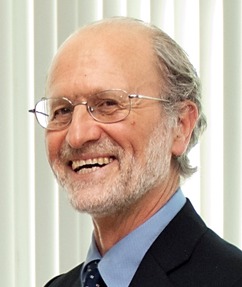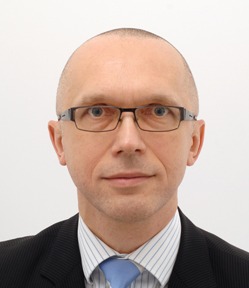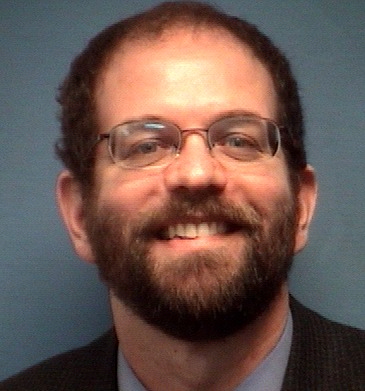|
Opening Plenary Lecture
Robot & Remote-Controlled Machine Technology for Response Against Accident of Nuclear Power Plants and Toward Their Decommission Prof. Hajime Asama Dept. of Precision Engineering, The University of Tokyo, JAPAN |

|
| Monday, October 8, 2012 |
9:30-10:30am Fenix Room |
SLIDES: The pdf version of the plenary slides is available here.
Abstract: The Great Eastern Japan Earthquake and Tsunami occurred in March 11, 2011, and the accident of Fukushima Daiichi Nuclear Power Plant occurred due to the earthquake and the tsunami. There have been lots of needs of remote-controlled machine technology including robot technology (RT) for the response against the accident. Especially, in the case of accident of the nuclear power plant, various tasks are required to accomplish in the high radiation environment, and utilization of remote-controlled machine technology was essential. In this presentation, it is introduced how the technology has been introduced and utilized in the emergent situation of the accident, and what kind of technology is still demanded for the middle-range and long-range missions towards decommission of the nuclear power plants. It is also analyzed why the robot technology developed in the projects in Japan so far could not be introduced smoothly in the emergent situation, and issues are discussed how we should prepare for the disasters and accidents that can occur in future, including not only practical technology development but also maintenance of technology, training of operators, their system and organization such as mockups and test fields, and political strategy to realize it.
Speaker Bio: Hajime Asama received his B. S., M. S., and Dr. Eng in Engineering from the University of Tokyo, in 1982, 1984 and 1989, respectively. He was Research Associate, Research Scientist, and Senior Research Scientist in RIKEN (The Institute of Physical and Chemical Research, Japan) from 1986 to 2002. He became a professor of RACE (Research into Artifacts, Center for Engineering), the University of Tokyo in 2002, and a professor of School of Engineering, the University of Tokyo in 2009. He received JSME (Japan Society of Mechanical Engineers) Robotics and Mechatronics Division Academic Achievement Award in 2001, RSJ (Robotics Society of Japan) Best paper Award, JSME Robotics and Mechatronics Award in 2009, etc.
He is the vice-president of Robotics Society of Japan since 2011. He was an AdCom member of IEEE Robotics and Automation Society from 2007 to 2009, an editor of Journal of International Journal of Intelligent Service Robotics, Journal of Field Robotics, Journal of Robotics and Autonomous Systems. He played the director of the Mobiligence (Emergence of adaptive motor function through the body, brain and environment) program in the MEXT Grant-in-Aid for Scientific Research on Priority Areas from 2005 to 2009. He is a Fellow of JSME since 2004 and RSJ since 2008. Currently, he is a member of Headquarter of Midterm and Long-term Research and Development Promotion of Japanese Government and TEPCO, a member of Advisory Committee on Medium-range and Long-range Measures for Fukushima Daiichi Nuclear Power Plant of Japan Atomic Energy Commission, the leader of Project on Disaster Response Robots and Their Operation System of Council on Competitiveness-Japan, and the chairman of Robotics Task Force for Anti-Disaster (ROBOTAD).
His main research interests are distributed autonomous robotic systems, ambient intelligence, service engineering, and Mobiligence, and service robotics.
|
Plenary Lecture
Surgical Robotics - Achievements and Challenges Prof. Paolo Dario The BioRobotics Institute, Scuola Superiore Sant'Anna IIT Center for Micro-BioRobotics@SSSA, Pisa, Italy |

|
| Tuesday, October 9, 2012 |
8.30-9:30 am Fenix Room |
SLIDES: The pdf version of the plenary slides is available here.
Abstract: Medical Robotics in general, and Surgical Robotics in particular, are a paradigm of the challenges and accomplishments of Robotics in the last three decades. Considered as little less than science fiction and a field for visionaries in the 80’, they have emerged gradually through skepticism, controversy, attempts and failures, to reach the status of clinical acceptability and to become a success story of how research can lead to industrial exploitation.
It is now possible, and worth, reconstructing the milestones of this story, that can epitomize the tremendous potential of successful adoption of modern robotics in many areas of application outside the factory floor.
In this lecture, the challenges, the solutions, the failures and the successes of robots in surgical applications will be presented and the main technical reasons for failure and for success will be discussed. This story will be described using the paradigm of size and dexterity of robotics mechanisms, two features that are fundamental for the acceptability of robotics in surgery, and that represent the evolution from early solutions using large external robots, to the emerging field of endoluminal surgery, to the frontier of ultra-minimally invasive surgery, all requiring advanced functionalities, increased efficiency, better dependability, and improved miniaturized mechanisms with reliable and simple design.
Speaker Bio: Paolo Dario is Professor of Biomedical Robotics and Director of the BioRobotics Institute of the Scuola Superiore Sant'Anna, Pisa, Italy. He received his Dr.Eng. Degree in Mechanical Engineering from the University of Pisa in 1977 and then he was visiting researcher and professor at Brown University, USA, at EPFL, Switzerland; at College de France, France; at Polytechnic University of Catalunya, Spain; at Zhejiang University, China; and at Waseda University, Japan. His main research interests are in the fields of medical robotics, bio-robotics, mechatronics and micro/nano engineering, robotics for surgery and for rehabilitation, and on companion robots. He is the coordinator of many national and European projects, and the author of more than 300 scientific papers (250 on ISI journals). He has been and is Editor-in-Chief, Associate Editor and member of the Editorial Board of many international journals. Prof. Dario is an IEEE Fellow, a Fellow of the European Society on Medical and Biological Engineering, and a recipient of many honors and awards, such as the Joseph Engelberger Award. He is also a member of the Board of the International Foundation of Robotics Research (IFRR) and a Fellow of the School of Engineering, University of Tokyo. Prof. Dario served as President of the IEEE Robotics and Automation Society in the years 2002-2003.
|
Plenary Lecture
European Robotics Research: Achievements and challenges Dr. Libor Kral Head of Unit CONNECT/A2 (Robotics) in the European Commission |

|
| Tuesday, October 9, 2012 |
9:30-10:00am Fenix Room |
SLIDES: The pdf version of the plenary slides is available here.
Abstract: In the 7th Framework Programme, more than 100 projects in the area of robotics and cognitive systems have been funded with the overall amount approaching €600 million in the period from 2007 until 2012, ranging from blue-sky to more applied research. The focus has been on robotics as an enabling technology for diverse applications in real-life. 2013 will be the last year of FP7 and the relevant work programme presents a balance between continuity and transition towards the next Framework Programme (Horizon 2020). The ingredients include more emphasis on industry-led RTD topics, substantially increased effort to attract new levels of industry participation and focus on use-cases in service robotics.
The Horizon 2020 proposal includes the establishment of so called Public-Private Partnerships (PPP) to strengthen Europe‘s competitive position in a particular business sector. A European PPP in robotics will boost research and innovation in this field and will foster a positive perception of robotics. It will aim at strengthening competitiveness of manufacturers and providers of robotics technologies and services, the widest uptake by the users of robotics technologies and services as well as at the excellence of its science base.
Speaker Bio: Dr. Libor Kral is the Head of Unit A2 (Robotics) in the European Commission, DG CONNECT since July 1st, 2012. From July 2008 to June 2012, Dr. Kral was the Head of Unit E5 (Cognitive Systems, Interaction, Robotics) in the European Commission DG INFSO and he was also Head of Unit E1 (Interaction & Interfaces) in the European Commission DG INFSO from June 2007 to June 2008. Previous to his engagement with the European Commission, he was the Quality Manager in TietoEnator A.S.-Czech Software Center in Ostrava from 2005-2007 and also a R&D Manager and Project Manager at IT Industry.
Dr. Libor Kral graduated from the Faculty of Mathematics and Physics, Charles University in Prague, Czech Republic and his field of study was theoretical cybernetics, mathematical information science and systems theory.
|
Plenary Lecture
Today’s DARPA Robotics Programs: Towards a Symbiosis of Productivity and Protection Gill A. Pratt, PhD DARPA - Defense Advanced Research Projects Agency, USA |

|
| Thursday, October 11, 2012 |
8:30-9:30am Fenix Room |
Abstract: Developers of today’s commercial and defense robots have much to be proud of. Commercial robots are increasingly raising the productivity of human labor. Defense robots are better protecting human lives. But we have barely begun to benefit from what robots can do. The potential of both commercial and military robots will be better realized when the enhancement of both productivity and protection are synergistically combined. This talk will give an overview of DARPA’s current robotics programs, and describe how our programs are advancing several capabilities necessary for the synergy of productivity and protection, including supervised autonomy, affordability, mobility, dexterity, speed, and energy efficiency. The talk will conclude with an in depth look at the upcoming DARPA Robotics Challenge, including continued opportunities for participation.
Speaker Bio: Dr. Gill Pratt joined DARPA as a program manager in the Defense Sciences Office (DSO) in January 2010. He presently manages the Autonomous Robotic Manipulation (ARM), Maximum Mobility and Manipulation (M3), Nano Air Vehicle (NAV), Cognitive Technology Threat Warning System (CT2WS), System of Neuromorphic Adaptive Plastic Scalable Electronics (SyNAPSE) and DARPA Robotics Challenge (DRC) programs.
Dr. Pratt’s primary interest is in the field of robotics. Specific areas include the development of declarative design methods that enhance the symbiosis between designer and design tool, rapid fabrication methods, interfaces that enhance human/machine collaboration, mechanisms and control methods for enhanced mobility and manipulation, and innovative actuators. He also has a strong interest in the application of neuroscience techniques to robot perception and control.
Dr. Pratt holds a doctorate in electrical engineering and computer science from the Massachusetts Institute of Technology (MIT) in the field of neurophysiology. He was an associate professor and director of the Leg Lab at MIT. Subsequently, he became a professor at Franklin W. Olin College, and before joining DARPA, was Associate Dean of Faculty Affairs and Research. Dr. Pratt holds several patents in series elastic actuation, computer architecture, and adaptive control.
Round Table
Robotics R&D Future Research Directions
Chair & Moderator: Aníbal T. De Almeida, IROS2012 General Chair
| Tuesday, October 9, 2012 |
10:00-10:30am |
This Round Table will open a window on the main research avenues for future robots and intelligent systems. As a basis for the discussion, the IROS2012 Program Chair, Eugenio Guglielmelli, will provide a brief overview of the major robotics programmes and large projects, ongoing and in preparation worldwide. Key researchers from different geographical regions will comment and briefly report on specific case-studies, such as the European Robot Companions Flagship project, the US Robotics Initiative, and others.

